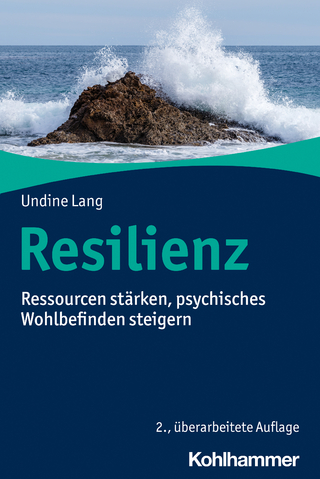
Loneliness For Dummies
For Dummies (Verlag)
978-1-394-22932-1 (ISBN)
Loneliness for Dummies helps readers understand loneliness and how to take steps to overcome this unwanted feeling. At some point in life, loneliness affects everyone. It can be triggered by unusual situations and events like children leaving home, losing a loved one, working remotely, moving, divorce, or retirement. It can also occur seemingly without reason. Thanks to this book, you don’t have to be afraid of being lonely. Loneliness For Dummies explains that loneliness is a natural reaction that signals us to make a change. You’ll learn the signs to look out for to assess loneliness, why people feel lonely, and most importantly, step-by-step actions you can take to reduce your feelings of loneliness. Read case studies of people who have felt lonely to see how they overcame loneliness. This book includes a simple scale to help you measure how lonely you feel, so you can identify which changes to make and assess your progress.
Learn why people feel lonely, including the situations that trigger loneliness and what this uncomfortable feeling means
Discover the signs of loneliness so you can recognize it in others and step in to help
Complete a questionnaire to gauge your own loneliness and identify steps you can take to feel less lonely
Make changes to your lifestyle that will lead to greater satisfaction in the long run
This is the perfect Dummies guide for anyone who is currently feeling adrift without social connections and wants to make a change. Organizations looking for a reference for students or outreach professionals will also appreciate Loneliness For Dummies.
Andrea Wigfield is Professor of Applied Social and Policy Research and Director of the Centre for Loneliness Studies at Sheffield Hallam University. She is a prominent researcher working to understand loneliness, its implications, and the interventions that can reduce it. She has published over 40 books, chapters, articles, and reports.
Introduction 1
Part 1: Understanding Loneliness 5
Chapter 1: Loneliness and Why You Feel It 7
Chapter 2: Who’s at Risk of Loneliness and How It’s Measured 23
Chapter 3: The Wide-ranging Costs of Chronic Loneliness 45
Part 2: Creating Havens of Social Connection and Belonging 59
Chapter 4: Making Connections at Home 61
Chapter 5: Belonging in Your Community 87
Chapter 6: Finding Your Place at Work 101
Chapter 7: Interacting Through Technology 117
Part 3: Dealing with Loneliness During Life Transitions 135
Chapter 8: Overcoming Bereavement 137
Chapter 9: The Loneliness of Health Conditions and Disabilities 149
Chapter 10: Understanding the Interplay between Mental Health and Loneliness 171
Chapter 11: Becoming a Caregiver 187
Chapter 12: Making an Education or Employment Change 201
Part 4: Beating Loneliness 219
Chapter 13: Overcoming Loneliness Through Therapy or Healing Practices 221
Chapter 14: Developing Meaningful Relationships 241
Chapter 15: Finding Meaningful Places 263
Chapter 16: Building Resilience to Loneliness 275
Part 5: The Part of Tens 289
Chapter 17: Ten Tips to Break Out of Loneliness 291
Chapter 18: Eleven Suggestions for Young People 297
Chapter 19: Ten Pointers for Men 305
Chapter 20: Ten Tactics for Later Life 311
Appendix: Further Resources 317
Index 327
| Erscheinungsdatum | 03.04.2024 |
|---|---|
| Sprache | englisch |
| Maße | 185 x 231 mm |
| Gewicht | 499 g |
| Themenwelt | Sachbuch/Ratgeber ► Gesundheit / Leben / Psychologie ► Lebenshilfe / Lebensführung |
| Sachbuch/Ratgeber ► Gesundheit / Leben / Psychologie ► Psychologie | |
| Geisteswissenschaften ► Psychologie ► Sozialpsychologie | |
| Medizin / Pharmazie ► Medizinische Fachgebiete | |
| Sozialwissenschaften ► Soziologie ► Mikrosoziologie | |
| ISBN-10 | 1-394-22932-1 / 1394229321 |
| ISBN-13 | 978-1-394-22932-1 / 9781394229321 |
| Zustand | Neuware |
| Haben Sie eine Frage zum Produkt? |
aus dem Bereich


